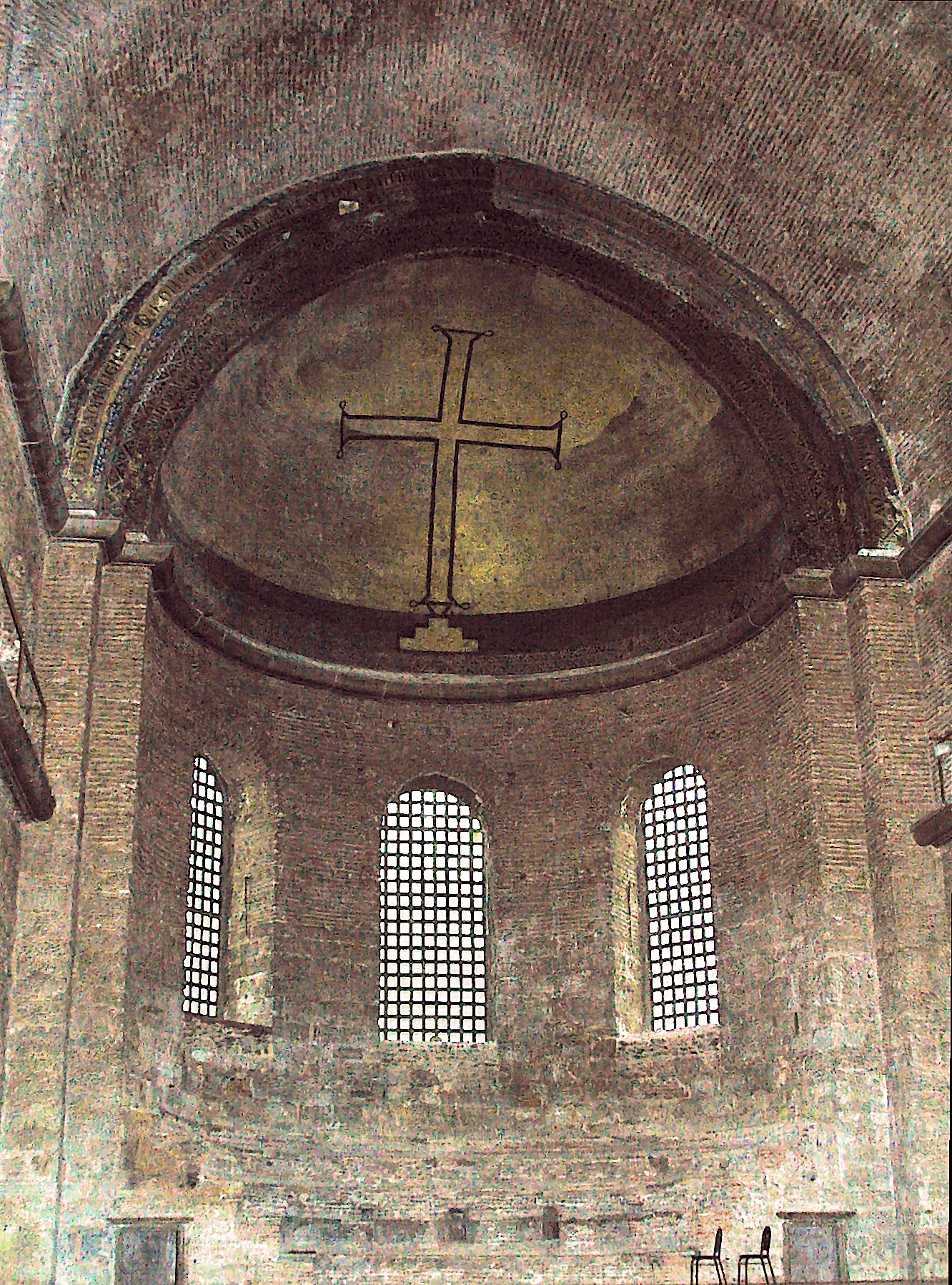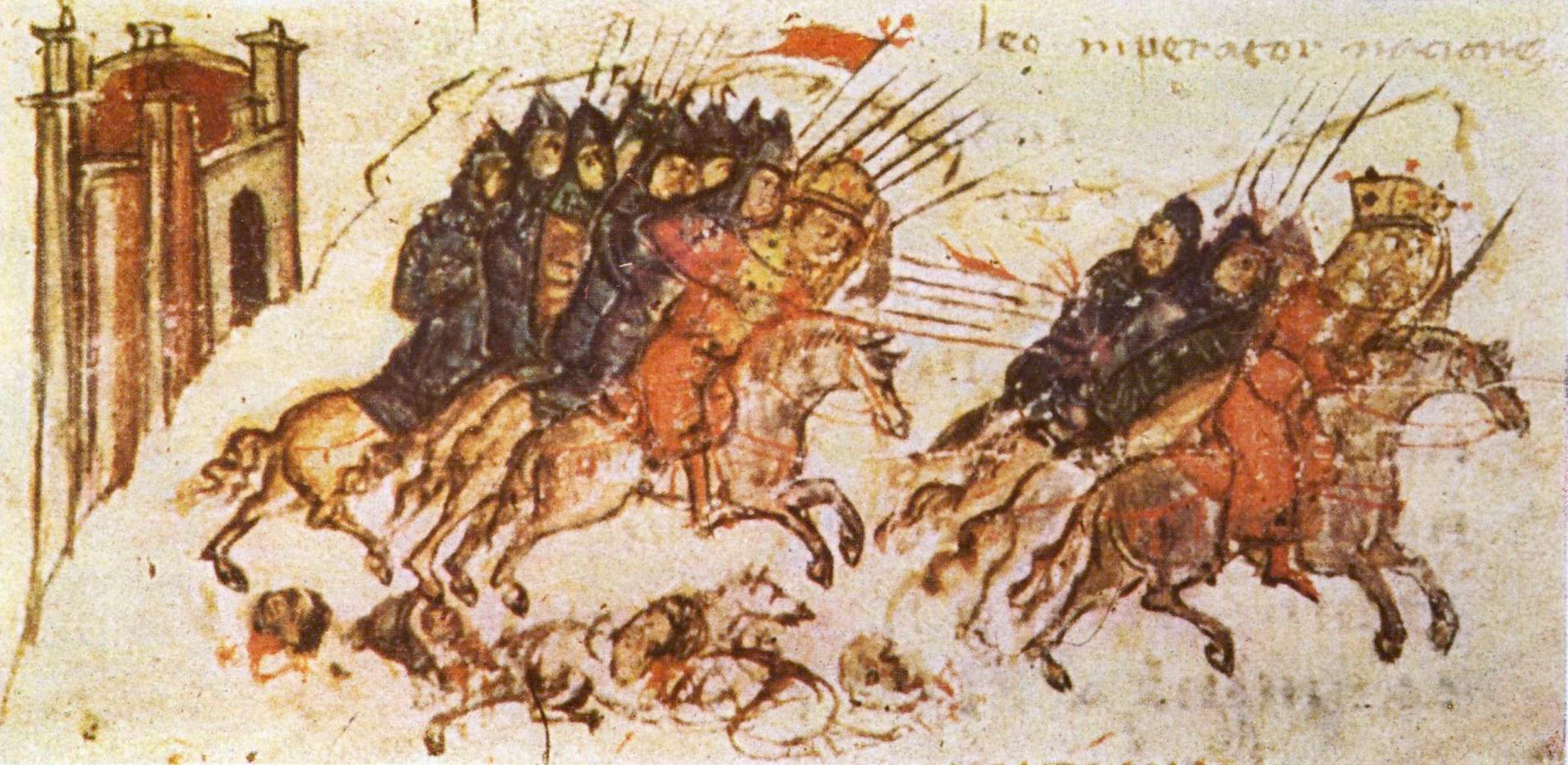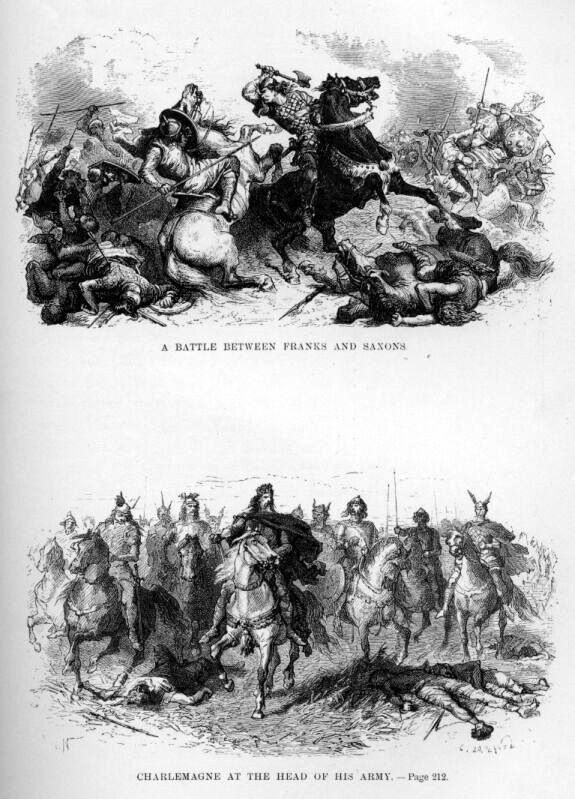|
775
__NOTOC__ Year 775 ( DCCLXXV) was a common year starting on Sunday of the Julian calendar. The denomination 775 for this year has been used since the early medieval period, when the Anno Domini calendar era became the prevalent method in Europe for naming years. Events By place Byzantine Empire * September 14 – Emperor Constantine V dies while on a campaign in Bulgaria. In his 34-year reign he has suppressed monasticism and image worship, restored aqueducts, revived commerce, and repopulated Constantinople. He is succeeded by his 25-year-old son Leo IV ("the Khazar"), who continues Constantine's campaigns against the Bulgars and Muslim Arabs. Europe * Saxon Wars: King Charlemagne holds a major assembly at Quierzy (Northern France). He leads a Frankish army into Saxony to retake the '' castrum'' of Syburg (near Dortmund), then rebuilds and garrisons fortified Eresburg. He reaches the Weser at a place called Braunsberg, where the Saxons stand for battle, ... [...More Info...] [...Related Items...] OR: [Wikipedia] [Google] [Baidu] |
Constantine V
Constantine V (; July 718 – 14 September 775) was Byzantine emperor from 741 to 775. His reign saw a consolidation of Byzantine security from external threats. As an able military leader, Constantine took advantage of Third Fitna, civil war in the Muslim world to make limited offensives on the Al-'Awasim, Arab frontier. With this eastern frontier secure, he undertook repeated campaigns against the First Bulgarian Empire, Bulgars in the Balkans. His military activity, and policy of settling Christian populations from the Arab frontier in Thrace, made Byzantium's hold on its Balkan territories more secure. He was also responsible for important military and administrative innovations and reforms. Religious strife and controversy was a prominent feature of his reign. His fervent support of Byzantine Iconoclasm, iconoclasm and opposition to Christian monasticism, monasticism led to his vilification by some contemporary commentators and the majority of later Byzantine writers, who ... [...More Info...] [...Related Items...] OR: [Wikipedia] [Google] [Baidu] |
Leo IV The Khazar
Leo IV the Khazar (; 25 January 750 – 8 September 780) was Byzantine emperor from 775 to 780 AD. He was born to Emperor Constantine V and Empress Tzitzak in 750. He was elevated to co-emperor in the next year, in 751, and married to Irene of Athens in 769. When Constantine V died in September 775, while campaigning against the Bulgars, Leo IV became senior emperor. In 778 Leo raided Abbasid Syria, decisively defeating the Abbasid army outside of Germanikeia. Leo died on 8 September 780, of tuberculosis. He was succeeded by his underage son Constantine VI, with Irene serving as regent. Biography Leo IV was born on 25 January 750AD, to Emperor Constantine V and his first wife, Empress Tzitzak who had been given the Christian name Eirene. Because his mother was a Khazar, Leo was given the epithet 'the Khazar'. Leo was elevated to co-emperor in 751, while still an infant. He became emperor on 14 September 775, after Constantine V died while campaigning against the Bulgarian Em ... [...More Info...] [...Related Items...] OR: [Wikipedia] [Google] [Baidu] |
Byzantine Iconoclasm
The Byzantine Iconoclasm () are two periods in the history of the Byzantine Empire when the use of religious images or icons was opposed by religious and imperial authorities within the Ecumenical Patriarchate (at the time still comprising the Roman-Latin and the Eastern-Orthodox traditions) and the temporal imperial hierarchy. The First Iconoclasm, as it is sometimes called, occurred between about 726 and 787, while the Second Iconoclasm occurred between 814 and 842. According to the traditional view, Byzantine Iconoclasm was started by a ban on religious images promulgated by the Byzantine Emperor Leo III the Isaurian, and continued under his successors. It was accompanied by widespread destruction of religious images and persecution of supporters of the veneration of images. The Papacy remained firmly in support of the use of religious images throughout the period, and the whole episode widened the East–West Schism, growing divergence between the Byzantine and Carolingian Em ... [...More Info...] [...Related Items...] OR: [Wikipedia] [Google] [Baidu] |
Charlemagne
Charlemagne ( ; 2 April 748 – 28 January 814) was List of Frankish kings, King of the Franks from 768, List of kings of the Lombards, King of the Lombards from 774, and Holy Roman Emperor, Emperor of what is now known as the Carolingian Empire from 800, holding these titles until his death in 814. He united most of Western Europe, Western and Central Europe, and was the first recognised emperor to rule from the west after the fall of the Western Roman Empire approximately three centuries earlier. Charlemagne's reign was marked by political and social changes that had lasting influence on Europe throughout the Middle Ages. A member of the Frankish Carolingian dynasty, Charlemagne was the eldest son of Pepin the Short and Bertrada of Laon. With his brother, Carloman I, he became king of the Franks in 768 following Pepin's death and became the sole ruler three years later. Charlemagne continued his father's policy of protecting the papacy and became its chief defender, remo ... [...More Info...] [...Related Items...] OR: [Wikipedia] [Google] [Baidu] |
First Bulgarian Empire
The First Bulgarian Empire (; was a medieval state that existed in Southeastern Europe between the 7th and 11th centuries AD. It was founded in 680–681 after part of the Bulgars, led by Asparuh of Bulgaria, Asparuh, moved south to the northeastern Balkans. There they secured Byzantine Empire, Byzantine recognition of their right to settle south of the Danube by Battle of Ongal, defeatingpossibly with the help of Seven Slavic tribes, local South Slavic tribesthe Byzantine army led by Constantine IV. During the 9th and 10th century, Bulgaria at the height of its power spread from the Danube Bend to the Black Sea and from the Dnieper River to the Adriatic Sea and became an important power in the region competing with the Byzantine Empire. As the state solidified its position in the Balkans, it entered into a centuries-long interaction, sometimes friendly and sometimes hostile, with the Byzantine Empire. Bulgaria emerged as Byzantium's chief antagonist to its north, resulting in ... [...More Info...] [...Related Items...] OR: [Wikipedia] [Google] [Baidu] |
Lübbecke
Lübbecke (; ) is a town in northeast North Rhine-Westphalia in north Germany. This former county town lies on the northern slopes of the Wiehen Hills (''Wiehengebirge'') and has around 26,000 inhabitants. The town is part of district of Minden-Lübbecke within the Regierungsbezirk Detmold, ''Regierungsbezirk'' of Detmold in the Ostwestfalen-Lippe region. Lübbecke was first mentioned in the records in 775 as ''hlidbeki'' and was given town rights in 1279. Geography Lübbecke is situated just north of the Wiehen Hills, approx. north of Herford and west of Minden. Location Lübbecke is located in northeast North Rhine-Westphalia, north of East Westphalia-Lippe (''Ostwestfalen-Lippe''), in the southwestern part of the district of Minden-Lübbecke. From a landscape perspective, the town lies in the west of the Minden Land. Geographically, most of the built-up area is on the North German Plain. Only its southern suburbs lie on the northern slope of the Wiehen Hills, whose crest ... [...More Info...] [...Related Items...] OR: [Wikipedia] [Google] [Baidu] |
Bulgars
The Bulgars (also Bulghars, Bulgari, Bolgars, Bolghars, Bolgari, Proto-Bulgarians) were Turkic peoples, Turkic Nomad, semi-nomadic warrior tribes that flourished in the Pontic–Caspian steppe and the Volga region between the 5th and 7th centuries. They became known as Eurasian nomads, nomadic equestrians in the Volga-Ural region, but some researchers trace Bulgar ethnic roots to Central Asia. During their westward migration across the Eurasian Steppe, the Bulgar tribes absorbed other tribal groups and cultural influences in a process of ethnogenesis, including Iranian peoples, Iranic, Finno-Ugric peoples, Finno-Ugric, and Huns, Hunnic tribes. The Bulgars spoke a Turkic languages, Turkic language, the Bulgar language of the Oghur languages, Oghuric branch. They preserved the military titles, organization, and customs of Eurasian steppes as well as pagan shamanism and belief in the sky deity Tengri, Tangra. The Bulgars became semi-sedentary during the 7th century in the Pontic- ... [...More Info...] [...Related Items...] OR: [Wikipedia] [Google] [Baidu] |
Saxon Wars
The Saxon Wars were the campaigns and insurrections of the thirty-three years from 772, when Charlemagne first entered Saxony with the intent to conquer, to 804, when the last rebellion of tribesmen was defeated. In all, 18 campaigns were fought, primarily in what is now northern Germany. They resulted in the incorporation of Saxony into the Frankish realm and their forcible conversion from Germanic paganism to Christianity. The Saxons were divided into four subgroups in four regions. Nearest to the ancient Frankish kingdom of Austrasia was Westphalia, and farthest was Eastphalia. In between the two kingdoms was that of Engria (or Engern), and north of the three, at the base of the Jutland peninsula, was Nordalbingia. Despite repeated setbacks, the Saxons resisted steadfastly, returning to raid Charlemagne's domains as soon as he turned his attention elsewhere. Their main leader, Widukind, was a resilient and resourceful opponent, but eventually was defeated and bapti ... [...More Info...] [...Related Items...] OR: [Wikipedia] [Google] [Baidu] |
Dortmund
Dortmund (; ; ) is the third-largest city in North Rhine-Westphalia, after Cologne and Düsseldorf, and the List of cities in Germany by population, ninth-largest city in Germany. With a population of 614,495 inhabitants, it is the largest city (by area and population) of the Ruhr as well as the largest city of Westphalia. It lies on the Emscher and Ruhr (river), Ruhr rivers (tributaries of the Rhine) in the Rhine-Ruhr, Rhine-Ruhr Metropolitan Region, the List of EU metropolitan regions by GDP#2021 ranking of top four German metropolitan regions, second biggest metropolitan region by GDP in the European Union, and is considered the administrative, commercial, and cultural centre of the eastern Ruhr. Dortmund is the second-largest city in the Low German dialect area, after Hamburg. Founded around 882,:File:Boevinghausen erwaehnung.jpg, Wikimedia Commons: First documentary reference to Dortmund-Bövinghausen from 882, contribution-list of the Werden Abbey (near Essen), North-Rhine ... [...More Info...] [...Related Items...] OR: [Wikipedia] [Google] [Baidu] |
Quierzy
Quierzy (), also known as Quierzy-sur-Oise (; formerly in , ''Carisiacum'', ''Charisagum'', ''Karisiacum''), is a commune in the Aisne department in Hauts-de-France in northern France, straddling the Oise River between Noyon and Chauny. History Today's peaceful village was the site of a major villa or palatium in the Merovingian and Carolingian eras, and the site of assemblies of the Frankish nobles, of synods of bishops and abbots and other important events. Here Charles Martel died, 22 October 741. The name of the place appears variously in documents: ''Cariciacum, Carisiacum, Charisagum, Karisiacum''. Of the royal residence of the Merovingians and the house of Pepin, only traces of earthworks remain, in fields outside Quierzy, in the direction of Manicamp. The early medieval Château de Quierzy on the bank of the Oise, rebuilt in the fifteenth century as the fortress of the bishops of Noyon, survives as a single tower. Quierzy was already a significant stronghold of ... [...More Info...] [...Related Items...] OR: [Wikipedia] [Google] [Baidu] |
Sigiburg
The Sigiburg was a Saxon hillfort in Western Germany, overlooking the River Ruhr near its confluence with the River Lenne. The ruins of the later Hohensyburg castle now stand on the site, which is in Syburg, a neighbourhood in the Hörde district of Dortmund. Archaeological evidence suggests the site was occupied in the Neolithic era. The hillfort was raised ca. 700 by Westphalian Saxons. During the Saxon Wars, it was taken by the Franks under Charlemagne in 772, retaken by the Saxons (possibly under Widukind Widukind, also known as Wittekind and Wittikund, was a leader of the Saxons and the chief opponent of the Frankish king Charlemagne during the Saxon Wars from 777 to 785. Charlemagne ultimately prevailed, organized Saxony as a Frankish provinc ...) in 774, and taken again and refortified by Charlemagne in 775. [...More Info...] [...Related Items...] OR: [Wikipedia] [Google] [Baidu] |
September 14
Events Pre-1600 *AD 81 – Domitian became Emperor of the Roman Empire upon the death of his brother Titus. * 786 – "Night of the three Caliphs": Harun al-Rashid becomes the Abbasid caliph upon the death of his brother al-Hadi. Birth of Harun's son al-Ma'mun. * 919 – Battle of Islandbridge: High King Niall Glúndub is killed while leading an Irish coalition against the Vikings of Uí Ímair, led by King Sitric Cáech. * 1180 – Genpei War: In the Battle of Ishibashiyama in Japan, the new military commander of the Minamoto clan, Minamoto no Yoritomo, is routed by Ōba Kagechika of the Taira clan. * 1226 – The first recorded instance of the Catholic practice of perpetual Eucharistic adoration formally begins in Avignon, France. * 1402 – Battle of Homildon Hill: An invading Scottish army under Murdoch Stewart, Duke of Albany and Archibald, Earl Douglas is decimated by a contingent of 500 English archers under the command of George, Earl o ... [...More Info...] [...Related Items...] OR: [Wikipedia] [Google] [Baidu] |





